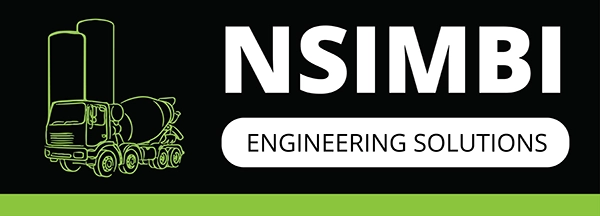Cement batching plants are the backbone of the construction industry, supplying the ready-mix concrete essential for various projects. A critical component in these plants is the pneumatic actuator, which plays a vital role in automating and controlling multiple processes. Pneumatic actuators harness compressed air to perform mechanical movements, enabling precise control and efficient operation of plant equipment. This article explores the functionality, types, benefits, and maintenance of pneumatic actuators in cement batching plants, emphasizing their importance in optimizing plant operations.
Functionality of Pneumatic Actuators
Pneumatic actuators work by converting compressed air energy into mechanical motion. In cement batching plants, these actuators are used to control essential components like valves, gates, and dampers. Key functions of pneumatic actuators include:
1. Control of Flow: Pneumatic actuators regulate the flow of materials through pipelines, chutes, and other processing equipment. By adjusting the position of valves or gates, they ensure the correct amount of material is delivered to the batching system.
2. Automation: By providing precise control over mechanical movements, pneumatic actuators enable the automation of plant processes. This reduces the need for manual intervention, enhances operational efficiency, and minimizes human error.
3. Actuation of Equipment: Pneumatic actuators operate various types of equipment, including mixers, feeders, and conveyor systems. Their reliable and responsive actuation is crucial for maintaining smooth plant operation.
4. Precision and Speed: Offering precise control over movement and speed, pneumatic actuators allow for accurate adjustments in the batching process. This precision helps ensure that correct mix ratios are achieved and that the plant operates efficiently.
Types of Pneumatic Actuators
Pneumatic actuators come in various types, each suited to specific applications and operational requirements:
1. Pneumatic Cylinders: Also known as air cylinders, these actuators use compressed air to move a piston back and forth within a cylinder, providing linear motion. They are commonly used for operating gates, sliding doors, and material handling equipment.
2. **Pneumatic Rotary Actuators**: These convert compressed air into rotational motion, operating valves, dampers, and other equipment that require rotational movement. They are known for their high torque and precise control.
3. Pneumatic Diaphragm Actuators: Using a flexible diaphragm to convert compressed air into mechanical movement, diaphragm actuators are ideal for applications requiring precise control of valves and other components, especially when handling corrosive or abrasive materials.
4. Pneumatic Vane Actuators: Vane actuators use a rotating vane to provide rotational movement. They are compact, with high torque, making them suitable for controlling valves and dampers in confined spaces.
5. Pneumatic Positioners: Used alongside pneumatic actuators, positioners provide precise control of actuator positions, ensuring accurate positioning and enhancing process control.
Benefits of Pneumatic Actuators
Pneumatic actuators offer several advantages for cement batching plants:
1. Efficiency: They provide fast and efficient actuation, streamlining plant operations and boosting overall productivity. Quick response times contribute to the smooth operation of automated systems.
2. Reliability: Renowned for their durability, pneumatic actuators are designed to withstand the harsh conditions of cement batching plants, including exposure to dust, moisture, and vibration.
3. Cost-Effectiveness: Generally, more cost-effective than electric or hydraulic actuators, pneumatic actuators require less maintenance and have lower operational costs, making them a practical choice for many applications.
4. Simplicity: Pneumatic actuators are relatively simple in design and operation, using readily available compressed air as their power source. This simplicity reduces maintenance complexity and eases troubleshooting.
5. Safety: In hazardous environments, pneumatic actuators are inherently safe, as they do not require electrical power, reducing the risk of sparks or electrical hazards. This safety feature makes them suitable for use in explosive or flammable environments.
Maintenance of Pneumatic Actuators
Proper maintenance is crucial to ensure the long-term performance and reliability of pneumatic actuators. Key maintenance practices include:
1. Regular Inspection: Conduct regular inspections for signs of wear, damage, or leakage, such as air leaks, damaged seals, or misaligned components. Early detection allows for timely repairs or replacements.
2. Air Supply Maintenance: Ensure that the compressed air supply is clean and free of contaminants. Regularly check and maintain air filters, regulators, and lubricators to guarantee optimal air quality and pressure.
3. Lubrication: Apply lubrication to moving parts like the piston or vane to reduce friction and wear. Proper lubrication helps prevent mechanical failures and extends the life of the actuator.
4. Cleaning: Keep the actuator and its components clean to prevent dust, debris, or material buildup. Regular cleaning maintains optimal performance and prevents operational issues.
5. Calibration: Periodically calibrate the actuator to ensure accurate positioning and control. Follow the manufacturer’s guidelines for calibration and adjust based on changes in process requirements.
6. Adherence to Safety Protocols: Follow safety protocols when maintaining and operating pneumatic actuators. Ensure that the actuator is properly isolated from the system before performing maintenance tasks to prevent accidents and ensure safe operation.
Conclusion
Pneumatic actuators are vital components in cement batching plants, playing a crucial role in automating and controlling various processes. Understanding the different types of pneumatic actuators, their benefits, and maintenance requirements allows for better management and operation within the plant. Regular maintenance and adherence to safety protocols are essential to ensure these actuators function effectively, minimizing downtime and maximizing productivity.
In the dynamic environment of a cement batching plant, where precision and efficiency are paramount, pneumatic actuators provide reliable and responsive control, ultimately contributing to the success of construction projects.

